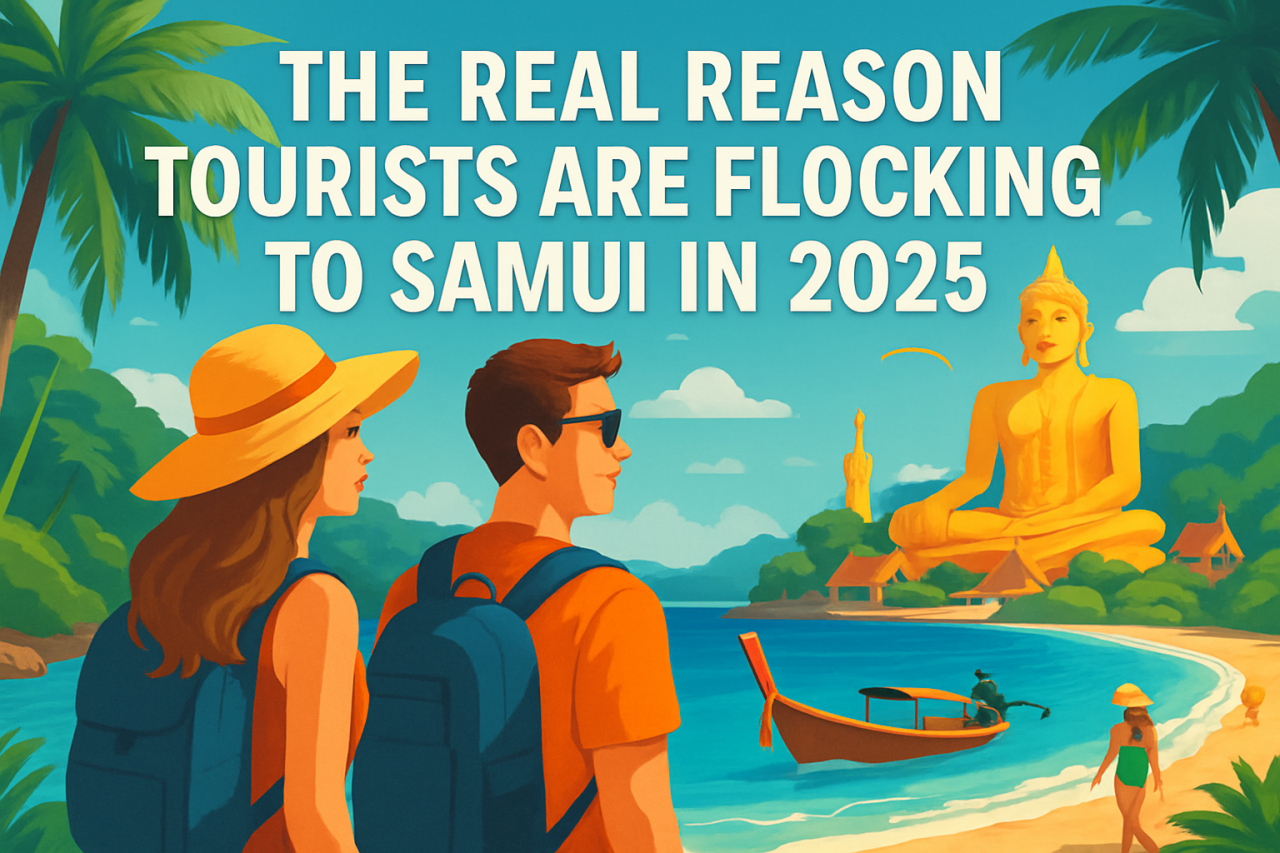The Real Reason Tourists Are Flocking to Samui in 2025
If you’d asked me, a decade ago, about Koh Samui, I might have offered a half-remembered travel cliché: “Isn’t it just another Thai beach?” But as with so many places that linger in the imagination, Samui rewards the traveler who lingers in the flesh. In 2025, the island is enjoying a renaissance—not as a playground for the party-hardened, but as a quietly sophisticated sanctuary. Why are so many drawn here now? Let me pull back the curtain.
A Beach for Every Mood (And Every Traveler)
Let’s begin with the obvious. Samui’s beaches have always been the main act, but these days, the supporting cast is just as captivating. Chaweng Beach remains the island’s lively heart—gleaming sand, turquoise water, and a promenade where espresso bars and seafood shacks jostle for your affection. Yet a short drive brings you to Maenam Beach, where the sand is soft, the surf is gentle, and the coconut palms seem to conspire in offering you solitude.
For those who crave the hush of early mornings and the promise of a good book, I recommend Bophut Beach, where the Fisherman’s Village offers a blend of old teak shophouses and cosmopolitan cafes. Search for “Bophut Beach” on Google Maps, and you’ll find your way to this gentle crescent of sand.
Insider’s Tip: If you’re a sunrise enthusiast, position yourself on the eastern shore—Chaweng or Lamai Beach—and let the day’s first light remind you why you traveled so far.
Temples That Whisper of Old Siam
Samui wears its spirituality lightly but sincerely. The most photographed is surely the Big Buddha Temple (Wat Phra Yai). Its 12-meter golden Buddha, visible as your plane descends, sits atop a staircase guarded by naga serpents—equal parts awe-inspiring and faintly kitsch. Yet, early in the day, before the tour buses arrive, you might find yourself alone in the company of saffron-robed monks and the soft tolling of a bell.
A personal favorite is Wat Plai Laem, a kaleidoscope of color and devotion, where Thai and Chinese Buddhist traditions intermingle. Here, Guanyin presides with her eighteen arms, gazing serenely across a lotus pond. You can search for it on Google Maps by typing: Wat Plai Laem.
Dining: From Beach Barbecue to High Cuisine
Samui’s culinary scene has matured in tandem with its visitors. Yes, you can still find a grilled fish shack at the water’s edge—try Sabienglae Restaurant (search for “Sabienglae Restaurant Samui” on Google Maps) for a plate of fiery southern curries and a view of the sea that makes everything taste brighter.
But the island now harbors an international array of flavors. At Dining on the Rocks (search for “Dining on the Rocks Samui” on Google Maps), you’ll dine atop a clifftop deck, each course more artful than the last, as the sun sinks into the Gulf of Thailand. A meal here is not merely dinner; it is a slow, sensory meditation.
Dry Humor Interlude: If you’ve ever wondered how many ways there are to cook coconut, Samui’s chefs are determined to provide a comprehensive, and delicious, answer.
Nature, Adventure, and the Art of Doing Nothing
Samui’s interior is less tamed than its coasts—a tangle of rainforest, waterfalls, and secret Buddha gardens. If you fancy a break from the beach, Na Muang Waterfall (search for “Na Muang Waterfall Samui” on Google Maps) is worth the modest hike, especially after the rains. The falls tumble into a natural pool, inviting even the most reluctant swimmer.
For the philosophically inclined, a visit to the Secret Buddha Garden (search for “Secret Buddha Garden Samui” on Google Maps) is essential. Created by a Samui fruit farmer in the 1970s, this hilltop sanctuary is filled with mossy statues and the slow, meditative sound of birdsong. It’s a place that invites reflection—on the passage of time, the persistence of faith, and the beauty of quiet ambition.
But let’s not overlook the singular pleasure of doing nothing. There is an artistry to it, here. Samui’s rhythm encourages you to slow down, to let the day unspool without agenda. Find a hammock, order some fresh coconut water, and watch as the world passes by on island time.
The Real Reason: Samui’s Subtle Alchemy
So, why are tourists flocking to Samui in 2025? It isn’t merely the beaches, the temples, or the cuisine—though each is a worthy draw. It’s the way these elements combine, gently, into a kind of subtle alchemy. Samui in 2025 feels like the answer to a question we’re all asking: is it possible to find peace, beauty, and a sense of wonder, all in one place?
The answer, it turns out, is yes. And it looks remarkably like Samui—sunlit, serene, and waiting to welcome you.
When you go:
- Transport: Rent a scooter if you’re brave (and insured), or hire a songthaew for short hops.
- Etiquette: Dress respectfully when visiting temples; shoulders and knees covered.
- Peak Season: December to April sees the best weather, but May and June offer quieter shores and lower prices.
- Must-Try: Samui’s coconut ice cream. Just trust me.
If you find yourself on this island, lingering over a meal or a sunset, remember: Samui is not a place to be seen, but a place to see yourself. And perhaps, in 2025, that’s what all of us are searching for.
To find any of the places mentioned, simply search for their names on Google Maps. And if you see a man squinting into the sun, notebook in hand, do say hello—I’ll be the one marveling, yet again, at how little it takes to feel at home on Samui.

Comments (0)
There are no comments here yet, you can be the first!